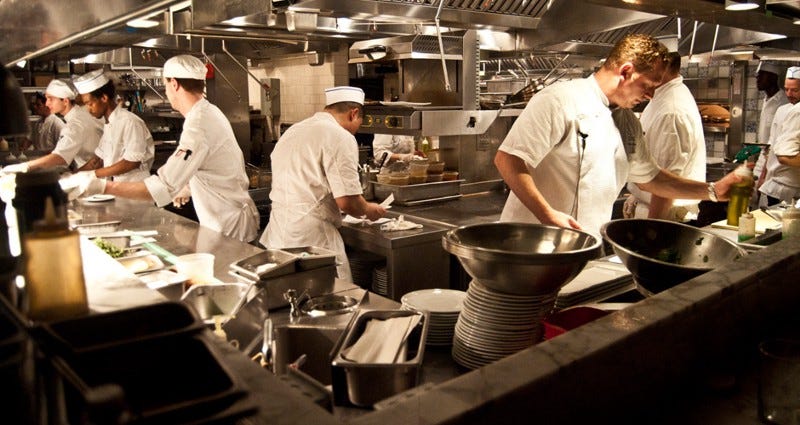Our unquestioned relationship with meal preparation
What is the cost of meal planning and preparation? And can it be made easier?
Change is happening. New technologies and business models have changed how we use information, communicate, and make payments, among many other things. This has created new value chains and methods of consumption.
But there are still some ingrained and unquestioned habits we have with meal preparation. How might might digital technology affect this?
The majority of people still have to go through the laborious process of purchasing, preparing, and cooking their food. And what sucks is that most of us might not actually enjoy it. We might not find the time or energy spent worthwhile, and we might really hate having to clean up afterwards.
Added up, these little food chores can take a valuable 1–2 daily hours of our time, and possibly even more when you consider the time spent thinking and planning. This is even more taxing for larger families. And while it’s true that alternatives such as microwave dinners do exist, they are not long term options when it comes to ideal nutrition.
As of late, food delivery platforms have aspired to connect restaurants to customers with needs such as: health-conscious, speed, choice and flexibility, social groups, and families. But currently, using delivery platform services is expensive and maybe not affordable to do on a regular basis. Lastly, there is also a cultural issue to address: the notion that eating at home is “better” in terms of health and quality.
If you consider the value of your time vs. what you spend on the food preparation process, then what is it really costing you? What if you had transparency over the quality and preparation of food that could be delivered to you? And what if having food delivered cost exactly what it would to buy food from the grocery store — how would that be different from preparing your food at home?
So what’s it going to take?
Planning and infrastructure
Changing how we prepare food will necessitate a reorganisation in both the food-service supply chain and our consumption habits. What factors would enable this shift?
100% reliable delivery times
Variety and choice
That food-service provider prices are competitive to a level that is on par with the cost of substitutes such as grocery shopping or “cooking at home”
Consumer education evolves so that there is a perception that “ordering in” can be part of an ideal, practical, and healthy lifestyle
The restaurants
The shift is already underway as many restaurants have repositioned themselves as a pure “kitchen operation”, working with food-delivery platforms under a number of digital brands, all under the same roof, creating different cuisine and menu choices for customers.
The main advantage to this model is that it allows restaurants to save money that would have been spent on expensive rents, furniture, and store marketing. A “kitchen” can have a no-frills setup, involving staff needed only for cooking, and does not have to be located on an expensive high-street. Kitchens can be located strategically to be within reach and deliver to a large segment of the population.
The money restaurants save by operating kitchens can consequently be taken as profit, passed on to customers, or used on R&D to progress menu development and geographic coverage.
Of course, there is still a marketing and branding challenge. But restaurants can now aim to channel their investment into delivery platform applications, where they have the opportunity to test different advertising on different customers segments in different locations at speed.
Why is this preferable to an ad placed via a generic or traditional medium? Because customers on delivery apps are there precisely because they want to order and eat. The efficacy of the advertising dollar spent is likely to be higher on a delivery app than on a general street where there might be less control over reaching the intended target audience.
The impact of data on the supply chain
Blessing restaurants with data will allow them to improve their operations. Upstream, this benefits forecasting and waste reduction, and allows restaurants to negotiate better procurement contracts with suppliers. Downstream, data will provide detail on customer preferences, order frequency, order times, and willingness to pay.
The combination of upstream and downstream data allows kitchen operators to widen their offering, creating new digital brands, menu items, and promotions using the same base of ingredients.
The chefs
Including the Chefs and culinary talent in the shift is paramount to maintaining creativity, quality R&D, and promotion based marketing. Culinary talent can play the important role of leaders and early adopters, shaping and creating new, tasty, and affordable recipes for a mass-market. They are the cornerstone of the feedback loop of customers, restaurants, and industry.
The customers
Going back to where we started, What if you knew what went into your food, where it came from, and how long it would take to have it at your doorstep?
If you could plan for the types of food you wanted, the quantities you want, and the days on which you wanted to receive them, would there still be a valid reason to want to cook at home?
If such a shift creates a permanent cultural change, then dare I say that we might have kitchen-less urban apartments in the future? Might we look back with laughter on the days when we cooked at home, eating mediocre food, and wasting precious time?







